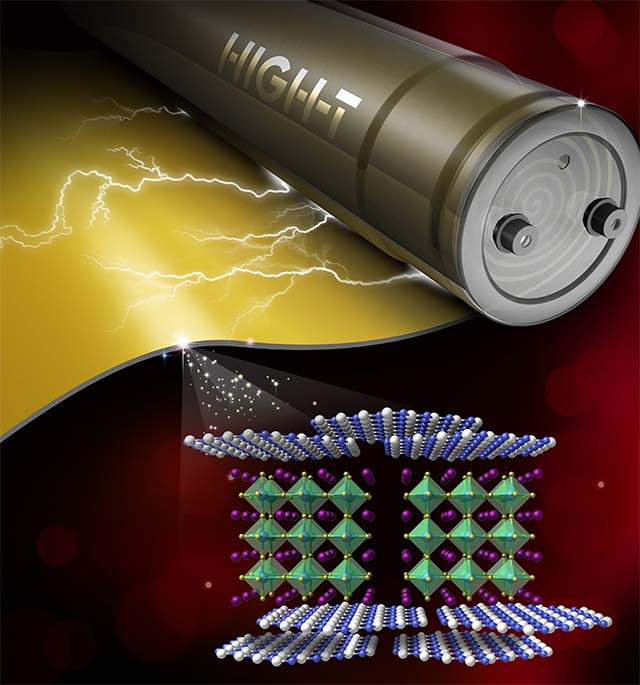Sandwich structures are common in aircraft, combining high stiffness, light weight, and structural strength. Could such a structure be useful in enhancing energy storage? Pennsylvania State University researchers think they’ve answered that question in a positive way. Sandwich-like Structures as Energy Storage Materials The blog has examined the possibilities inherent in incorporating batteries and supercapacitors into structures, but making the battery itself a sandwich structure could leave it as a discrete component within an electric vehicle, or lead to its being adapted as a full structural element. Penn State University materials scientists have achieved the goal of making a “polymer dielectric material with high energy density, high power density and excellent charge-discharge efficiency for electric and hybrid vehicle use.” Their battery resembles the sandwich construction of modern aircraft shells ranging from ultralight sailplanes to 787 Dreamliners. The “sandwich-like structure that protects the dense electric field in the polymer/ceramic composite from dielectric breakdown,” according to researchers. Rather than relying on the …
Cella Packages Hydrogen in Usable Ways
Cella Energy, a UK-based energy company, announced big plans for hydrogen storage in early 2011, and is now beginning to deliver on its earlier promise. Hydrogen, as desirable as it is for use in transportation, presents many hurdles in its use. Creating an infrastructure for its distribution has been a major impediment so far, but Cella hopes to overcome that with its nanotechnology pellets that can be distributed, transported and used much like fossil-fuel liquids. Cella highlights the fact that the hydrogen is stored in low-pressure form at ambient temperatures and can be handled safely in the open air (something that can’t be said about gasoline, for instance). It benefits customers by being able to use existing distribution networks and outlets. Imagine a gas station or airport refueling truck that dispenses hydrogen in pellet form as well as the normal liquid fuels. The company’s “elevator pitch” promotes the “three minute, 300 mile rule.” We’re used to pulling into a gas …
Ion Tiger Exceeds 48 Hours in Flight
Researchers at the U.S. Naval Research Laboratory flew their fuel cell powered Ion Tiger UAV for 48 hours and 1 minute on April 16-18 by using liquid hydrogen fuel in a new, NRL-developed, cryogenic fuel storage tank and delivery system. This flight shatters their previous record of 26 hours and 2 minutes set in 2012 using the same vehicle, but with gaseous hydrogen stored at 5000 psi. The airplane had flown 23 hours, 17 minutes in 2009. The 550 Watt (0.75 horsepower) fuel cell onboard the Ion Tiger has about four times the efficiency of a comparable internal combustion engine and the system provides seven times the energy in the equivalent weight of batteries. The Ion Tiger weighs approximately 37 pounds and carries a 4- to 5-pound payload.” Gerard Thevenot, who flew the English Channel on a hydrogen-powered “trike” in 2009, used about 550 grams per flight hour, with the craft’s 5-liter tank allowing about one hour flying time. …
The Layered Look in Batteries
Gurpreet Singh, assistant professor of mechanical and nuclear engineering, and his research team at Kansas State University in Manhattan, Kansas, are working out less expensive, more efficient ways to create nanomaterials and lithium-ion batteries. “We are exploring new methods for quick and cost-effective synthesis of two-dimensional materials for rechargeable battery applications,” Singh said. “We are interested in this research because understanding lithium interaction with single-, double- and multiple-layer-thick materials will eventually allow us to design battery electrodes for practical applications. This includes batteries that show improved capacity, efficiency and longer life.” Researchers grew graphene films on copper and nickel foils in less than 30 minutes by quickly heating them in a furnace in the presence of argon, hydrogen and methane gases – significantly at atmospheric pressure. Not needing to use a vacuum to create these films saves energy, time and cost, according to Singh. Researchers used the films to create the negative electrode of a lithium-ion cell and test the …
Princeton Solar Cell is “Black Hole for Light”
A great deal of the light that falls on solar cell panels does little to generate electricity, with a high percentage bouncing off pointlessly. Princeton researchers have confronted this issue with a layered assembly, otherwise known as a subwavelength plasmonic cavity. Developed by Princeton University researcher Stephen Chou and a team of scientists, the cavity dampens reflections and traps light. According to Princeton’s announcement, “The new technique allowed Chou’s team to create a solar cell that only reflects about 4 percent of light and absorbs as much as 96 percent. It demonstrates 52 percent higher efficiency in converting [direct] light to electrical energy than a conventional solar cell.” Overall, the team was able to increase solar cell efficiency a total of 175 percent with their nanostructured sandwich by capturing not only direct sunlight, but angled rays and diffuse light that occurs on cloudy days. MIT researchers recently reported attempts to gather varying wavelengths of light to effect the same type of …

